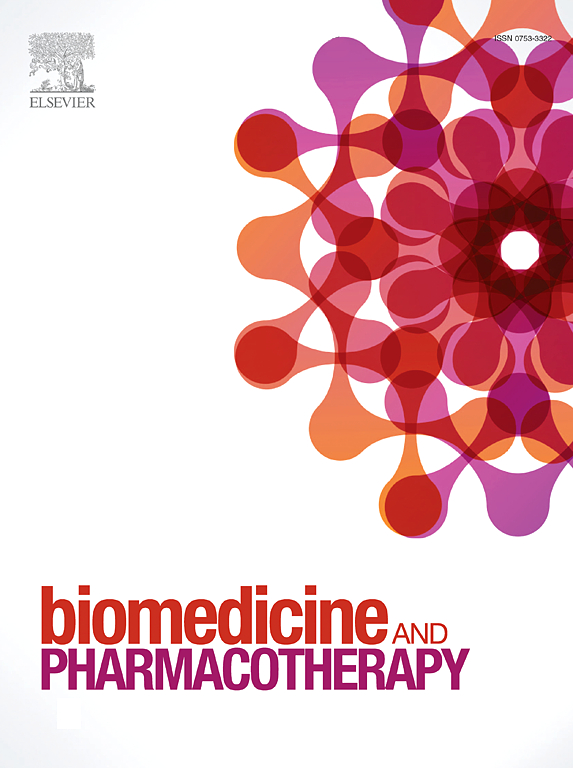IF 6.9
2区 医学
Q1 MEDICINE, RESEARCH & EXPERIMENTAL
引用次数: 0
摘要
准确预测药物毒性是治疗药物开发的一大挑战。使用动物模型预测毒性是一种由来已久的做法,但往往无法准确预测人体特异性反应。人体体外模型,如有机体和球形体,提供了替代动物模型的方法。在这项研究中,我们采用原代人源肝脏球体(hLiSps)和人诱导多能干细胞(iPSC)衍生的脑组织器官(hiBOs)创建了一个用于神经毒性评估的肝脏+脑联合模型,以研究加入肝脏预处理成分对大脑毒性反应的潜在影响。通过比较六种已知会对临床神经系统造成不良影响的药物的效果,我们发现在肝+脑模型中以临床相关剂量测试的曲格列酮 (Trgl) 与纯脑模型中的类似处理相比,会导致细胞存活率明显降低。这一点在多个供体和不同的脑器官发育阶段得到了进一步证实。相反,我们发现高剂量丙戊酸处理可提高肝+脑模型中细胞的存活率。利用RNA-seq进行的转录组分析表明,肝脏预处理的Trgl在hiBOs中引起了更明显的转录反应,受影响基因的数量增加了7倍,受影响通路的数量增加了10倍以上,这些通路包含与细胞分裂和神经发生特别相关的基因组成分,而在脑模型中没有观察到这种情况。总之,我们的数据表明,在 hiBOs 中添加 hLiSps 对使用全面的人类体外模型准确评估神经毒性至关重要。本文章由计算机程序翻译,如有差异,请以英文原文为准。
Multi-organ model assessment of neurotoxicity following exposure of liver spheroids to drugs
Accurate prediction of drug toxicity is a major challenge for therapeutic development. The use of animal models for predicting toxicity has been a longstanding practice, but often falls short in accurately predicting human-specific responses. Human in vitro models, such as organoids and spheroids, provide alternative approaches to animal models. In this study, we employed primary human-derived liver spheroids (hLiSps) and human induced pluripotent stem cells (iPSC)-derived brain organoids (hiBOs) to create a combined Liver+Brain model for neurotoxicity assessment, to investigate the potential influence of incorporating a liver preconditioning component on toxic responses in the brain. Comparing the effect of six example drugs that are known to cause adverse clinical neurological effects, we observed that troglitazone (Trgl), tested at clinically relevant doses in the Liver+Brain model, caused a significantly greater reduction in cell viability compared to similar treatments in the Brain-only model. This was further confirmed across multiple donors and various stages of brain organoid development. In contrast, we found that high dose valproic acid treatment increased cell viability in the Liver+Brain model. Transcriptome analysis using RNA-seq revealed that liver-preconditioned Trgl elicited a more pronounced transcriptional response in hiBOs, identifying a 7-fold increase in the number of affected genes and over a 10-fold increase in affected pathways containing gene set components specifically associated with cell division and neurogenesis, which were not observed in the Brain model. Taken together, our data suggest that the addition of hLiSps to hiBOs is critical to accurately assess neurotoxicity using a comprehensive human in vitro model.
求助全文
通过发布文献求助,成功后即可免费获取论文全文。
去求助
来源期刊
CiteScore
11.90
自引率
2.70%
发文量
1621
审稿时长
48 days
期刊介绍:
Biomedicine & Pharmacotherapy stands as a multidisciplinary journal, presenting a spectrum of original research reports, reviews, and communications in the realms of clinical and basic medicine, as well as pharmacology. The journal spans various fields, including Cancer, Nutriceutics, Neurodegenerative, Cardiac, and Infectious Diseases.

 求助内容:
求助内容: 应助结果提醒方式:
应助结果提醒方式:


